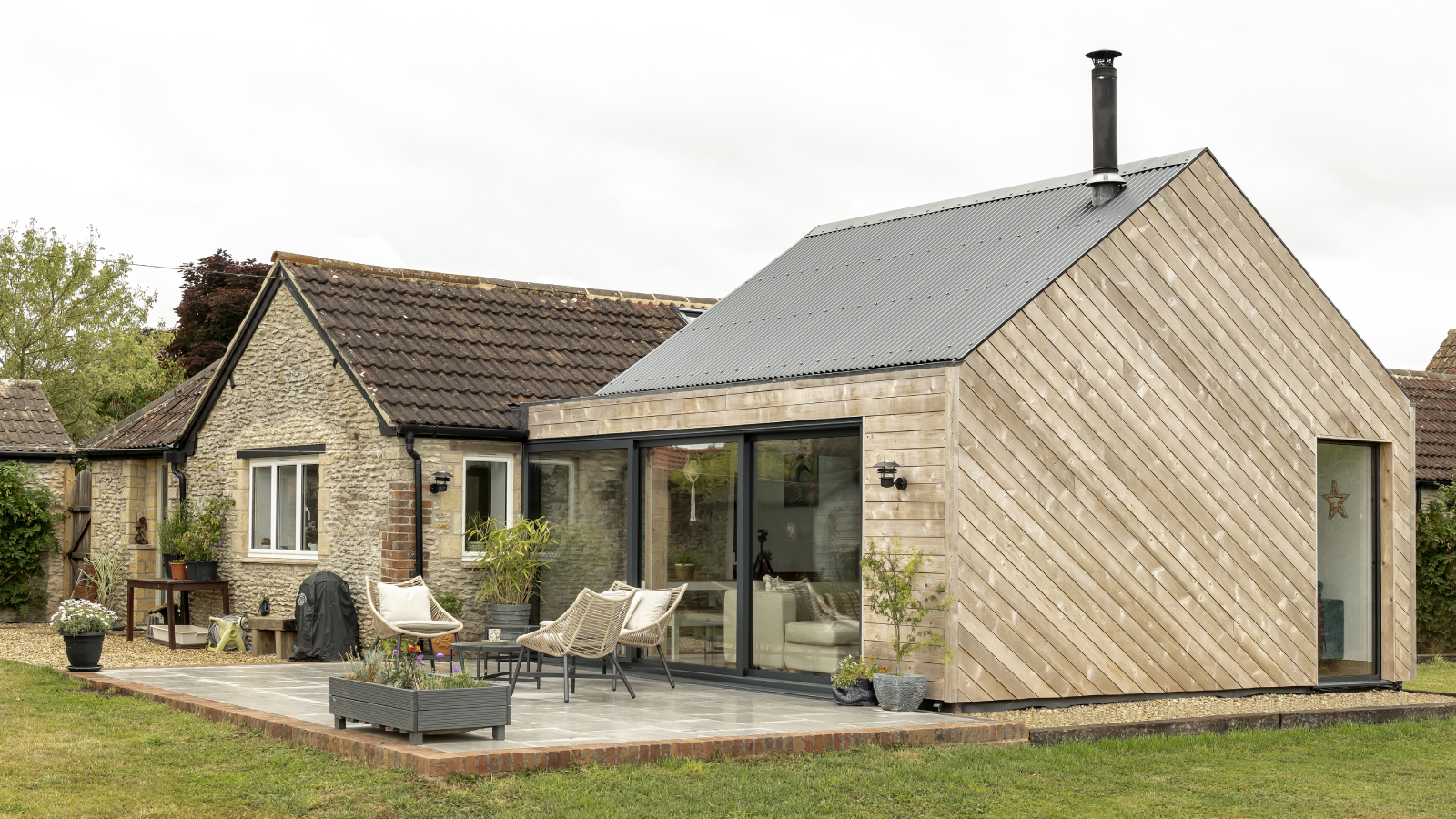Are solar panels on a flat roof a good idea?
If your roof design isn't sloped, can you install solar panels on a flat roof? We explore everything you need to know to ensure they work effectively
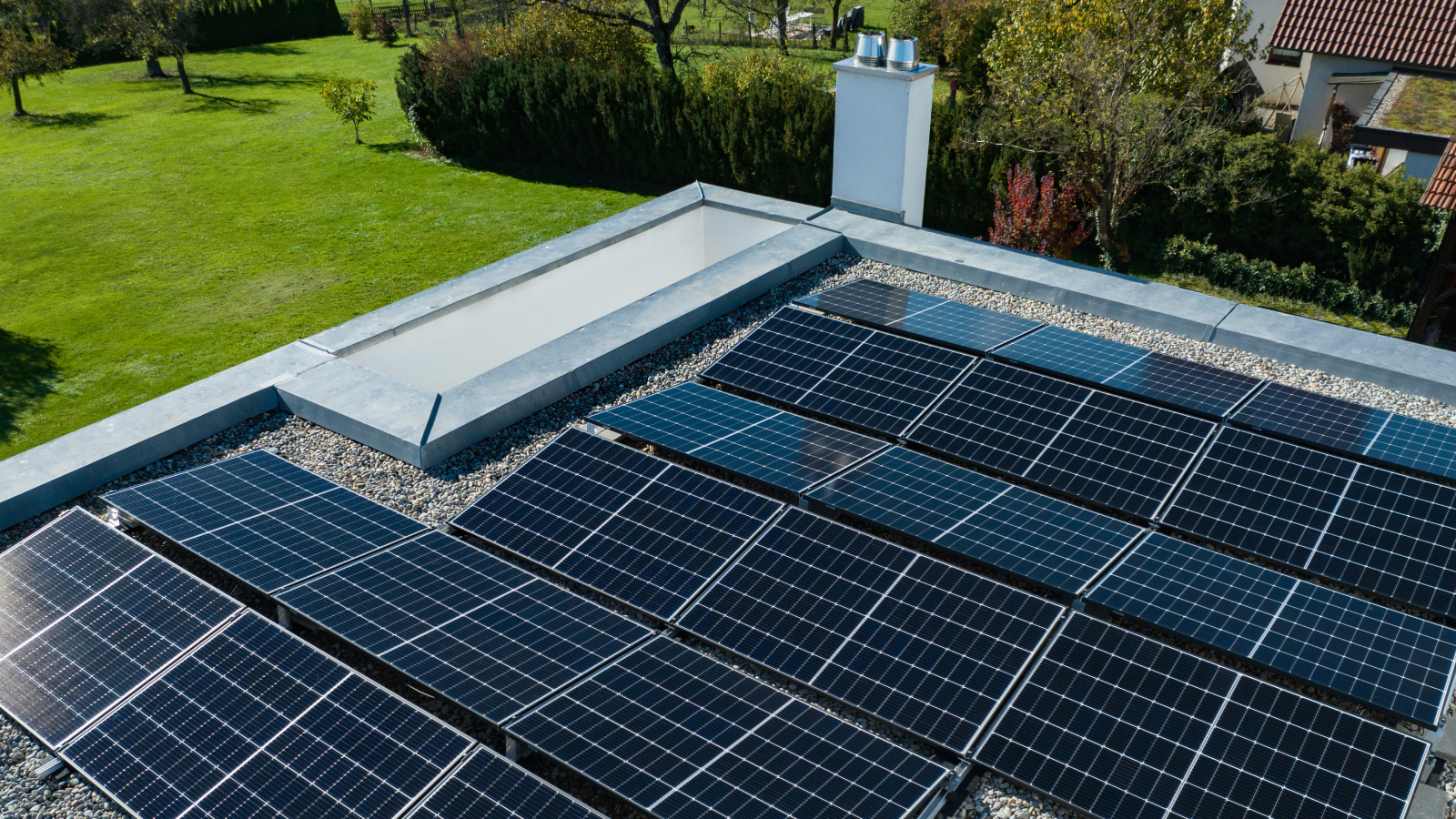
With the rising cost of energy, solar panels have become a popular choice to reduce energy bills. But can you install solar panels on a flat roof and will they still work?
The common perception is that solar panels are only suitable for a classic south facing pitched roof, but if the roof of your home doesn’t have the right orientation, can the flat roof of a garage or rear extension be just as effective?
In short, the answer is yes, but there are a number of different variables to get right. From the type of panel and the size of your roof, to how you position the panels will all have an impact on the ability of solar panels to meet your renewable energy objectives.
Are solar panels on a flat roof the same as the panels for pitched roofs?
The solar panels used on flat roofs are identical to those used on pitched roofs, but when it comes to installing solar panels on flat roofs, it's slightly different. While solar panels can technically be laid flat on the roof, this isn’t ideal if your roof isn't pitched.
Flat panels won’t have the orientation to capture as much sunlight, so their efficiency is reduced, and as water won’t drain so easily, they’ll be more susceptible to water damage.
This means there are a two different mounting systems to help ensure you get the best out of your solar panels on a flat roof.
Solar panel mounting systems for flat roofs
A mounting system is critical for solar panels on a flat roof, as by using a framing system, the panels can be tilted toward the sun, enhancing their efficiency. Most installers use adjustable racking systems to achieve the best angle for the specific location.
Bring your dream home to life with expert advice, how to guides and design inspiration. Sign up for our newsletter and get two free tickets to a Homebuilding & Renovating Show near you.
Tilted panels also allow rainwater to drain and wash away dirt and debris, keeping them clean and in good working order.
The two main types of mounting systems are:
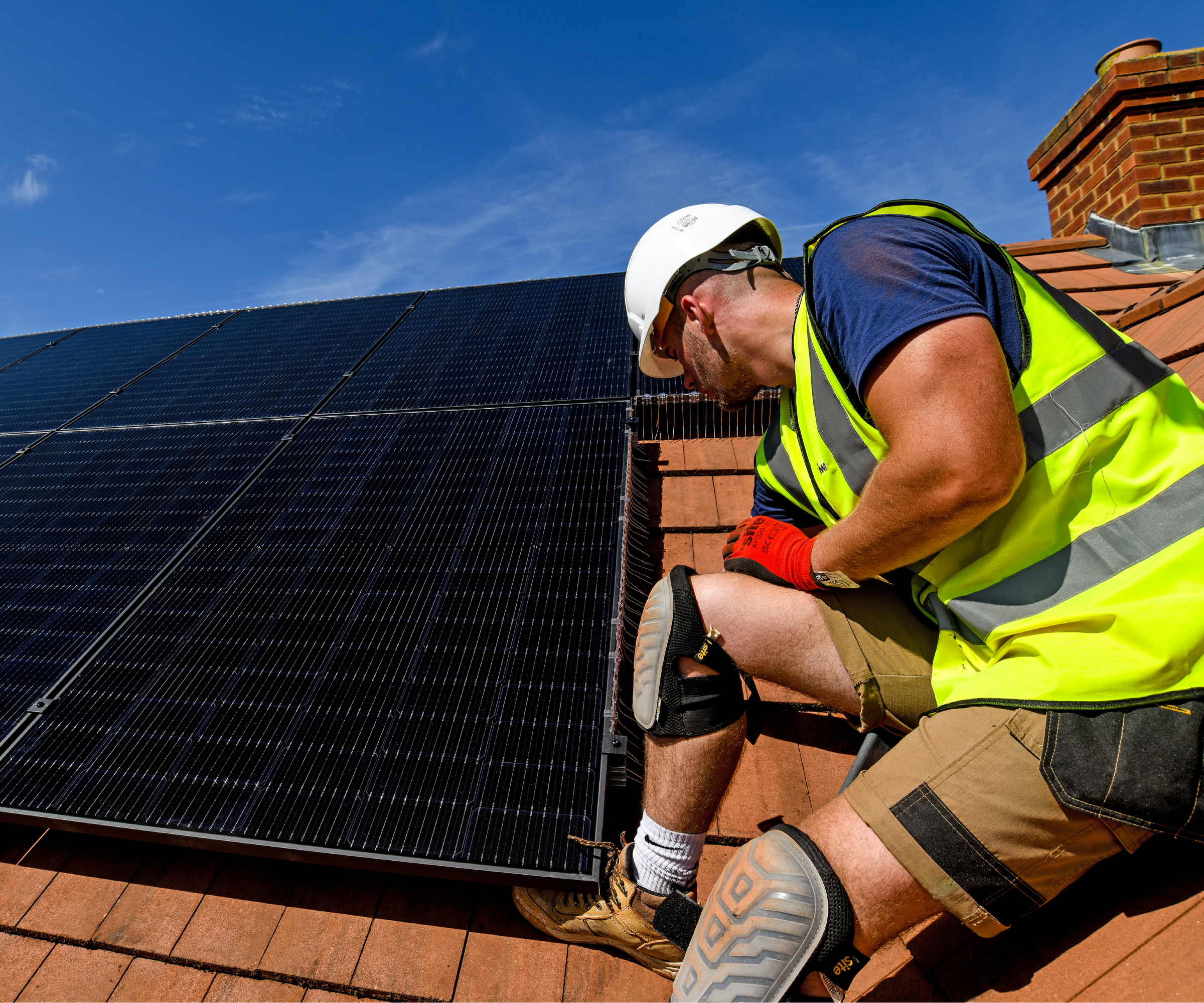
- Fixed mounting systems - requires fixings to be drilled into your roof to secure the mounting brackets so care must be taken to prevent leaks
- Ballasted mounting systems - to avoid drilling through the roof covering, a weighted system can be used. This typically involves using concrete blocks or heavy materials to hold the panels in place
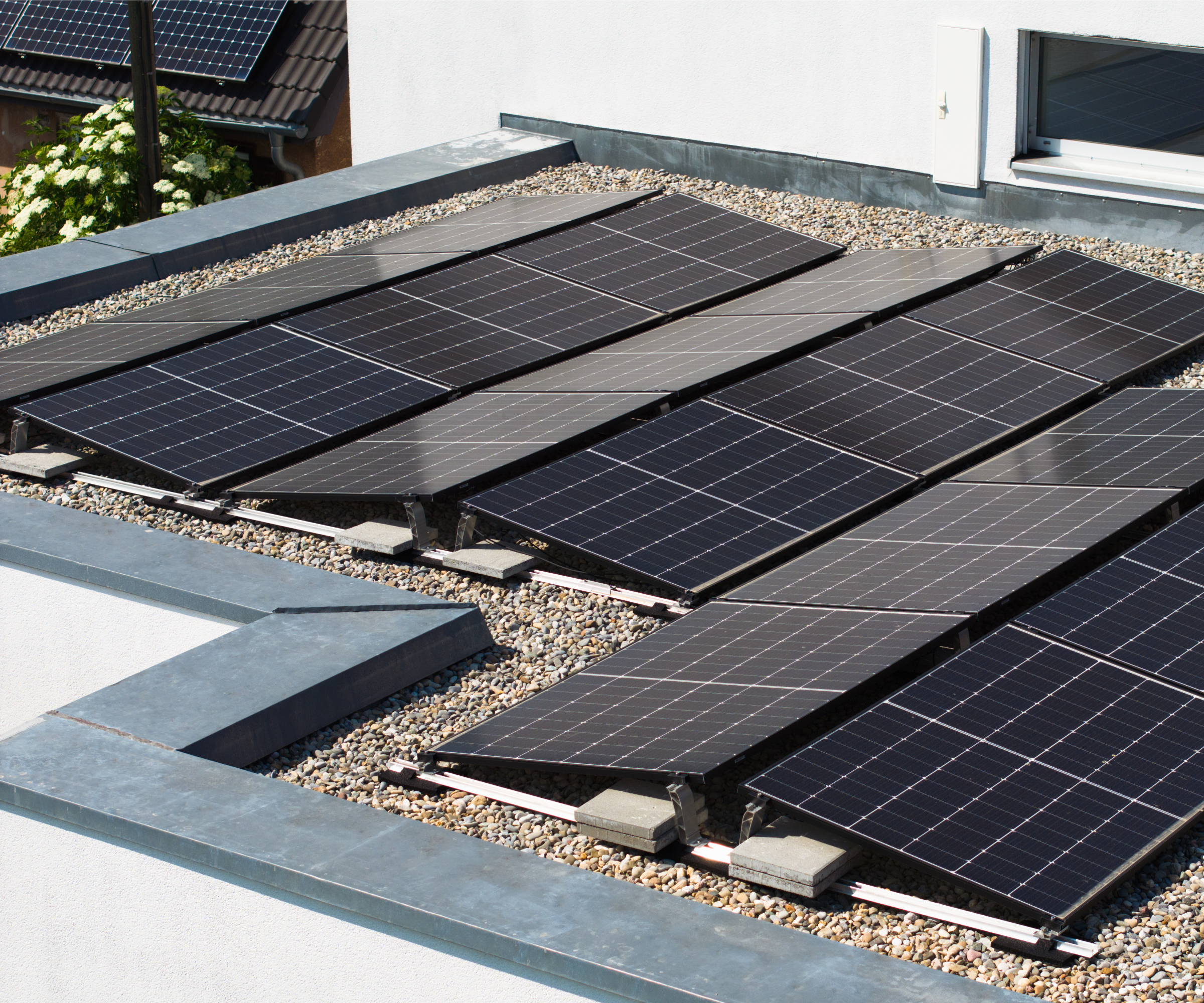
Roof space required
There isn’t a strict minimum size for installing solar panels on a flat roof, and it's more about working out how many solar panels do you need, as available space will determine how many panels can be installed and how much energy they can generate.
A typical residential solar panel covers about 1.5 square metres, so even a small flat roof can accommodate a few panels. However, the more space you have, the more energy you can produce.
Best type of solar panels for flat roofs
For the installation of solar photovoltaic panels on flat roofs, monocrystalline solar panels are often the best choice. Their high efficiency makes them ideal for maximizing energy production in limited space, which is common on flat roofs.
Additionally, their durability and long lifespan of around 25 - 30 years according to how long do solar panels last, makes them a reliable option, even though they are more expensive upfront.
Pros and cons of solar panels on a flat roof
Pros
The flat roofs of buildings like garages and flat roof extensions serve little purpose, other than keeping the weather out. As disused spaces, they can provide valuable locations to install renewable technologies such as solar panels.
One of the significant advantages of a flat roof is the flexibility it offers in placing and orienting the solar panels. Unlike pitched roofs, which limit panel placement to the roof's slope, a flat roof allows the panels to be positioned at the optimal angle and direction to maximize sun exposure.
When compared with pitched roofs, the installation of solar panels on flat roofs is usually easier, safer and quicker by not having steeply sloping roofs to work on. Existing roof finishes also don’t need to be disturbed, reducing the risk of damage and water leaks. This all means that the installation of solar panels on flat roofs should be quicker and less expensive when compared with pitched roof alternatives.
Whilst there are clearly advantages to installing solar panels on flat roofs, there are a few disadvantages that must be considered.
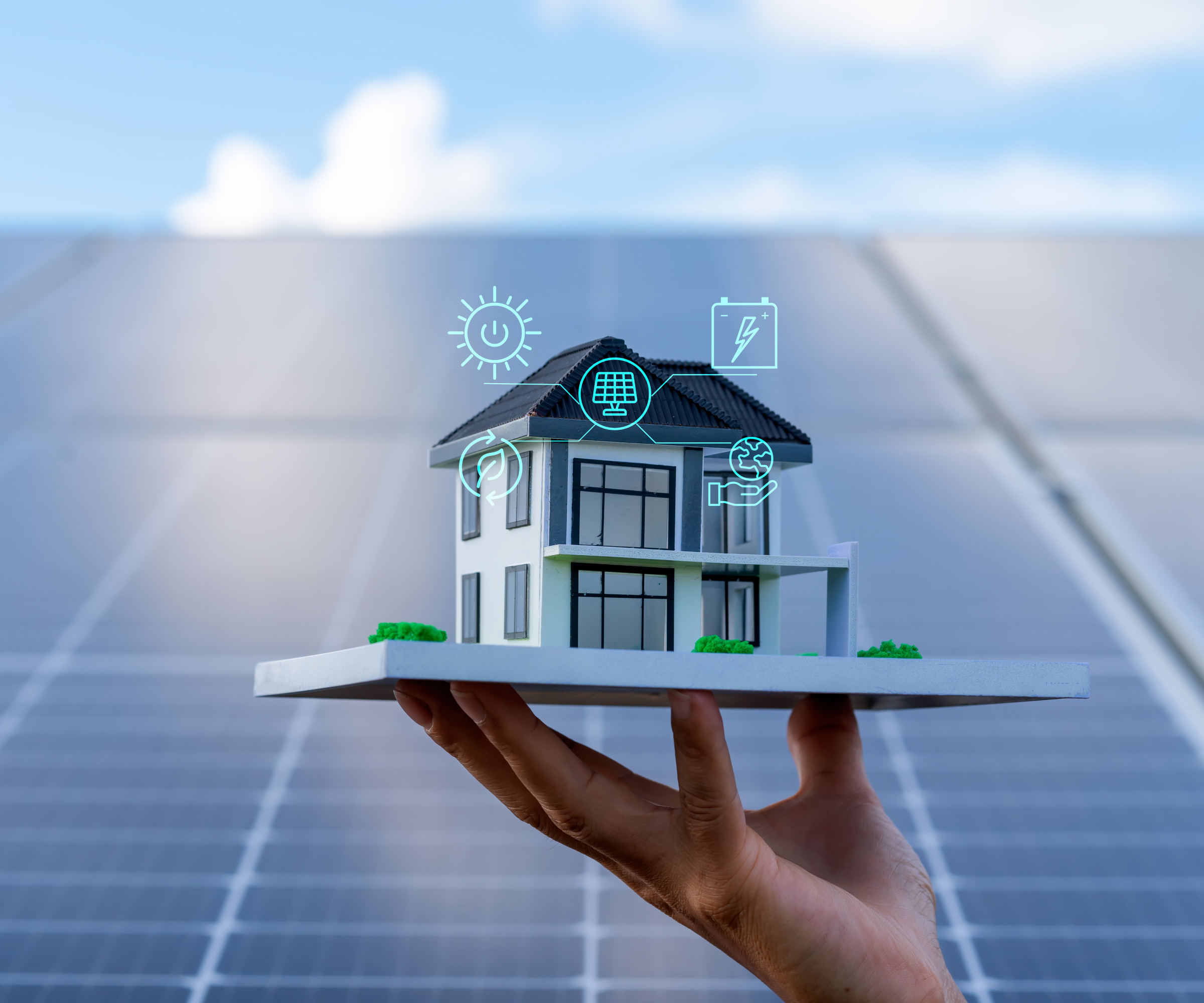
Cons
Unless a tilted mounting system is used, solar panels won't capture as much sunlight as those installed on pitched roofs, resulting in reduced energy production. This could mean the solar array won’t generate the expected amount of electricity, but if the flat roof is large enough, this could be compensated by installing additional panels.
If the solar panels have to be laid flat, you'll need to know how to clean solar panels to reduce the build-up of dirt, which if not removed will impair their efficiency. This means that access will be needed for routine maintenance purposes.
To avoid defects and warranty issues, the solar panels must be strictly installed as the manufacturer’s instructions. Lay them too flat and the warranty could be invalidated as rainwater won’t drain so easily, increasing the risk of damage.
Similarly, if they’re installed with a fixed mounting system that is bolted down, any penetrations through the roof covering must be done correctly to prevent leaks and maintain the roof covering warranty.
One of the bigger issues for flat roof installations is dealing with the structural implications. The weight of a typical solar panel system can range from 10 to 25 kg per square metre.
Existing flat roof structures are not usually built strong enough to support this imposed load so structural strengthening work may be needed. Furthermore, once the structural engineers get involved, they’ll be worried about wind uplift and increased risk of snow loads in winter meaning structural alterations can quickly become complex.
Planning permission for solar panels on a flat roof
Thanks to recent changes to permitted development rules, most installations on flat roofs won’t need solar panel planning permission. So long as the panels aren’t visible from the street and don’t exceed 200mm above the roof, they should be covered under permitted development rights.
This means that if the panels are relatively low profile and don’t stick out too much, you won't need to apply for planning permission. However, it’s always a good idea to check with your local planning department to confirm the specific regulations as there are a few exceptions.
If the property where the solar panels are to be installed is a listed building, or located on designated land e.g. a conservation area, an area of outstanding natural beauty or a national park, or if the panels will be visible from the street, planning permission will be needed.
Cost
When it comes to the cost of solar panels, installing solar panels on a flat roof generally costs about 20% more than on a pitched roof. This is mainly due to the additional materials and installation costs for the mounting system and the professional fees of the structural engineer.
FAQs
Do solar panels work as well on a flat roof?
Yes, solar panels can work just as well on a flat roof as on a pitched roof, provided they are correctly angled to capture the maximum amount of sunlight. A good racking system can tilt the panels to the optimal angle, ensuring they receive sufficient sunlight throughout the day, which maximises their efficiency.
Can solar panels lie flat on a flat roof?
Technically, solar panels can lie flat, but this is not recommended. Laying panels flat reduces their exposure to sunlight, significantly decreasing their efficiency. Flat panels are more prone to dirt and debris accumulation, as rainwater won’t naturally wash them clean. Panels laid flat will therefore require regular cleaning.
For more information on solar panels, find out just what's fact and what's fiction in myths about solar and learn about the different types of panels available in solar thermal vs solar pv.
Mark Stevenson has worked as a construction professional for over 30 years and following an extensive career in housebuilding. He is currently chief operating officer for Custom Build Homes and chair of the National Custom and Self Build Association. He previously worked as managing director for Potton, helping self builders build their own homes.
Whilst Mark describes himself as a ‘professional builder’ as a result of his career in housebuilding and timber building system manufacturing, he has specialist knowledge of timber construction and extensive expertise in finding land and project management.
He regularly shares his knowledge at Homebuilding & Renovating Shows and and coaches self builders about how to build their own homes. Aside from Mark’s professional career, his skills also extend to practical building knowledge as a skilled joiner, hands-on renovator and serial self-builder of his own development projects.
He is also Vice Chair of industry body, the Structural Timber Association.

